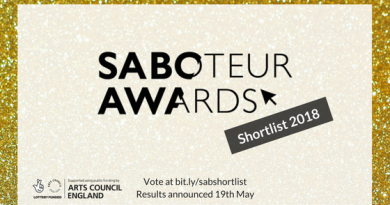‘Second Lives: Tales From Two Cities’ (ed. Rodge Glass & Jane Bernstein)
-Reviewed by Charlotte Barnes–
I approached Second Lives: Tales From Two Cities with apprehension, given that I was somewhat unprepared for what the anthology would contain. It markets itself as a collection of views provided by various writers in order to portray individual perceptions on the once-industrial cities of Glasgow and Pittsburgh. The anthology combines various examples of art, with some writers expressing themselves through the medium of short stories, some opting for a harsher and more accurate non-fiction approach and some even refusing to use words, choosing to portray their city through images that they have either taken or created themselves.
The basic purpose of the book wasn’t apparent to me initially, perhaps because I do not usually delve into this sort of literature. However, upon reading the introduction, which is a transcript of a conversation that occurred between the editors, Jane Bernstein and Rodge Glass, I found myself immediately pulled into the anthology.
As we flit between cities, beginning with Allan Wilson’s perspective of Glasgow, the true essence of these places soon becomes filtered through the writing and, ultimately, your reading of the texts. Wilson’s ‘Remember when this was a farm?’ is a particularly emotive story, with clear references to the developments in Glasgow that were slowly appearing where simple land used to be. Despite the emotional torment that seems apparent in the protagonist Jamieson, there still seems to be a final tone of optimism within the tale.
Lori Jakiela contributes a number of memorable poems to the anthology, offering her insight into Pittsburgh, before Kapka Kassabova plummets us back into the artistic depths of Glasgow, delivering another heart-warming example of short fiction.
Pittsburgh writer Gerry Stern delivers another interesting view into the city through his assessment that he has, ‘a love-hate relationship with Pittsburgh’. In detailing what he adores and despises about the city, it feels that we have taken another step closer to understanding the fundamentals of this land that so many artists appear to be enamoured of. Stern’s poetic musings are followed by Mitch Miller, writing for Glasgow, who proceeds to divulge details about his ‘dialectograms’ – while I won’t make a mockery of this art by attempting to explain it in my own layman terms, I will say that it’s a truly unique art form that is yet another contributing factor to what makes this collection so special.
One piece in particular that I enjoyed was ‘Dear Mr Billy Connolly’, written by Peter Mackie Burns; this short extract tells the tale of a pub in Glasgow that always has a Billy Connelly CD playing in the toilets. For me, this particular piece is a wonderful example of the quirks that are hidden beneath both Glasgow and Pittsburgh and, after reading and enjoying this anthology, I would like to thank all the writers involved for awakening me to those quirks which, before now, I was ignorant of.
Charlotte Glynn’s recollection of her younger years in Pittsburgh, followed by her abandonment of and eventual return to the city, I found particularly moving – more so given the diagram she supplies on which she plots her growing love for the city. If nothing else, this collection will encourage you to firstly, appreciate the world around you that you have not yet explored; and secondly, it with surely ignite some curiosity for your own hometown and exactly how you feel about it.
The Pittsburgh and Glasgow writers had very different impacts on me during my reading: something that I particularly enjoyed during my reading of Glasgow’s tales was how artistic this city is, something that I was completely unaware of until my reading of this anthology. Pittsburgh, on the other hand, endowed me with a wonderful picture of a town that is full of different perspectives, all of the same thing; I particularly enjoyed the over-laps between tales in which different writers referred to the same thing but in an entirely different manner – it was eye-opening, to say the least.
Despite my initial mixed feelings for the anthology, I am pleased to say that I would now recommend Second Lives to anyone – including people like myself who would no doubt grumble the same, ‘I don’t read these books’, moan that I did. I thoroughly enjoyed delving in and out of these people’s lives and their cities, and I am grateful that I was given the opportunity to do so.






Pingback: Saboteur Awards 2013: The Shortlist | Sabotage
Pingback: Saboteur Awards 2013: Published Poetry | Sabotage